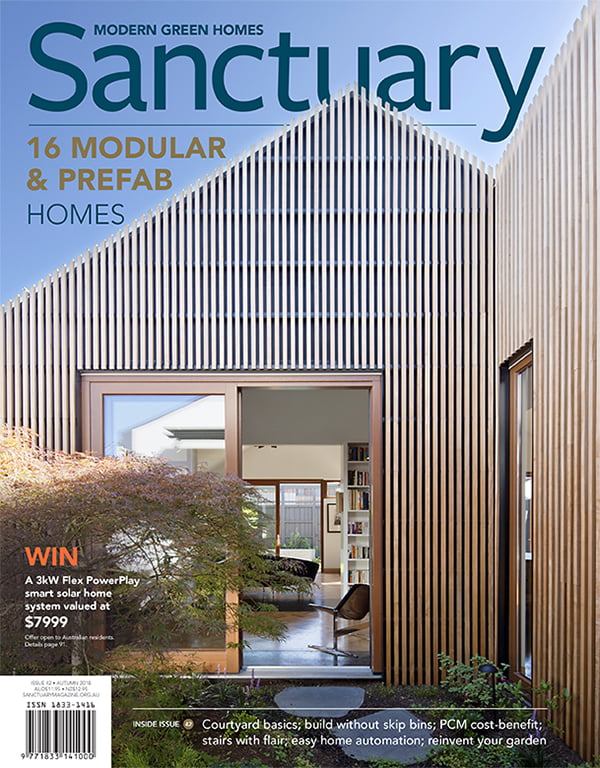Build without skip bins
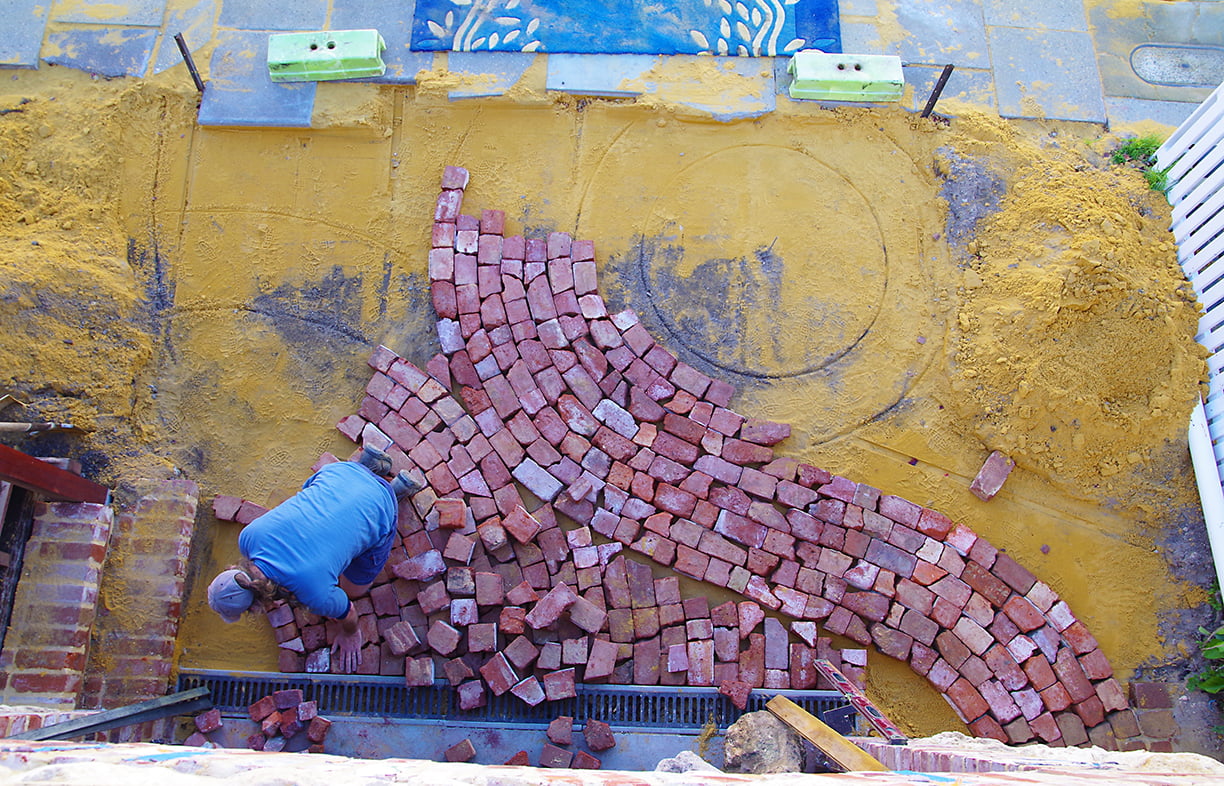
Reducing waste is a challenge for any house project especially as the building industry is still geared towards landfill – contributing almost 40 per cent of Australia’s overall waste. But, as owner-builder Greg O’Byrne found, he could all but eliminate landfill and even went without a skip bin when constructing his sustainable home.
We have all seen it before: a house under construction in a new sub-division or an intriguing renovation underway, but in the foreground is an overflowing skip bin. In it are offcuts of newly manufactured materials, demolished materials screaming out to explain their history and choc milk cartons, partially covered with a dried layer of waste concrete and tile grout. It’s an all too familiar sight and unfortunately, a largely under-considered step in the big picture of building.
How to avoid skip bins
We are nearing the end of our own building project in a small one-way street in inner Fremantle. Our challenge was to build a sustainable house in a long established urban environment. The first considerations about our waste were: “Where are we going to fit a skip bin?” followed by “What sort of things are we going to need to put in our skip bin?”. With these questions presented, we set about affirming our ethos on waste. By deciding to incorporate waste minimisation wholly into our project, we found we didn’t need a skip bin at all.
Deconstruction
First, there was a need to remove the old house from the block. We sourced multiple quotes from demolition contractors to do this job but their prices were based on profits made from salvaged materials. We were sure there was greater value in our old house for us, so we decided to do the majority of the demolition ourselves.
We salvaged about 7m3 of jarrah timber, a house-worth of red bricks, weatherboards, large locally quarried limestone footing blocks, concrete pavers and old fittings like doors, bathtub and basins. Our ethos to recycle was encouraged by the desire to embody the character of the old house into our new one; there’s no better way to do that than with salvaged pieces of the old house.
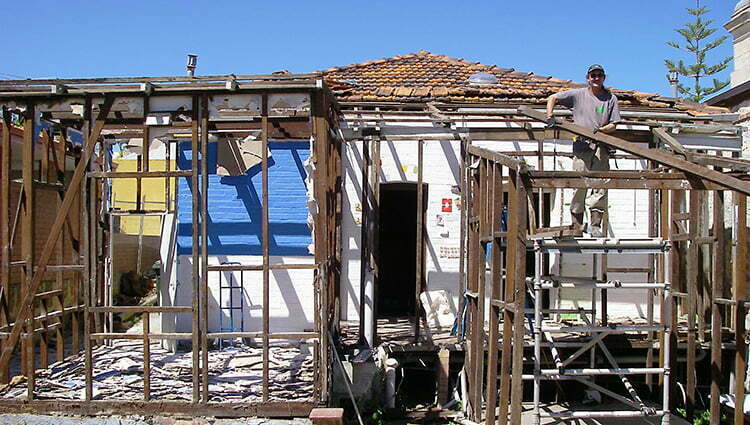
Waste as commodity
Looking at waste as a commodity is one of the best ways to begin dealing with it. We have all heard of the reduce, re-use and recycle adage. All building projects, including ours, need new materials and lots of them. Reducing excess ‘off-cut’ material accumulation, or creating less waste is probably one of the best prongs on the fork to tackle, and most certainly has the biggest impact. This approach can certainly save money in a project’s cost (most commonly borne by the owner). However, the volume of waste and how well it is managed will depend on the extent of your involvement and the commitment of any builders or contractors.
Accurate material orders
Most worksite skip bins contain brand new materials and this seems totally cost-ineffective, particularly to the owner, not to mention their short lifecycle before appearing in landfill. If you are ordering materials for a project, take the time to accurately calculate what is required. If you are unsure how much you need, under order, but be prepared to get a ‘little extra’ at a later stage. This sort of effort saves having to pay for something that you may end up also paying to get rid of later.
Upcycle
We all agree that junk is junk, but it is worth considering that we are not all the same. Some people see value in objects or items that others don’t. The only difference in the junk’s potential is the imagination devoted to it. We re-used our old earthenware sewer pipes by crushing them with a hammer and adding them to the concrete mix when pouring our exposed concrete floor. The results look great and tell a story, while they could’ve otherwise been in landfill.
There is an ever-growing number of people using re-purposed or up-cycled materials, particularly for construction purposes and there are great savings (and amazing results) to be achieved by doing so. Be willing to be flexible with the outcome of the final product. This may require close working relationships with your architect or structural engineer. It’s much savvier to acquire materials you love and shape them into your project than picture something you like and try to find the perfect materials at a reasonable price.
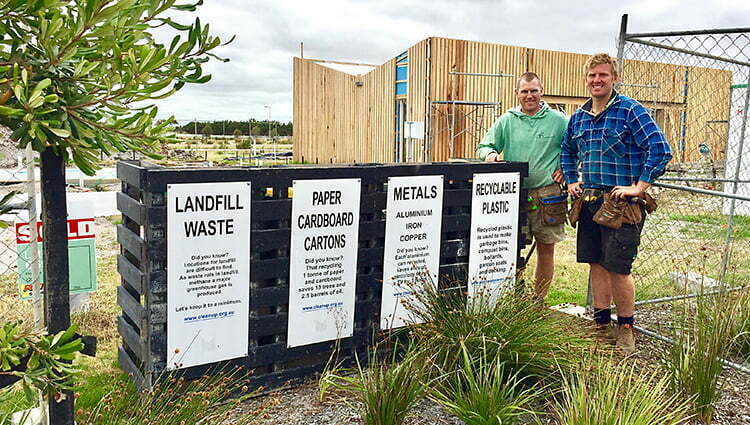
Online network
Our project would not have been what it is without the wonders of the inter-web. Countless items, from broken bricks, floorboards, scaffolding, laser level, brick saw and a ute were bought and sold through platforms like Gumtree. Rather than disposing of it when you are finished, consider if someone else may have a use for it, even if you think it’s worthless. It can’t go in the skip bin if you don’t have one.
Acquired for free, our 70m2 of temporary chipboard flooring was passed on two years later, largely unchanged, to a growing family building a bedroom extension, avoiding the bin on more than two occasions.
We did use a wheelie bin
But what about building site waste? Cement bags, brick pallet banding and all that cardboard packaging. How did we manage to do it on our project site? What waste there was, created daily, was sorted and stored in several designated areas at the end of the day.
Each week we had a budget of one council-collected wheelie bin and (unfortunately still the case in our suburb) one recycling bin per fortnight. We got really good at compressing, compacting and being efficient about loading these bins in a calculated manner, putting in them only what was absolutely necessary.

Waste management pays off
A skip bin on a building site seems more often than not to be an excuse to ignore or neglect the responsibilities of good waste management. Consider what it’s actually going to be used for and ask yourself (and your builder) if it is really necessary. Like us, you may be surprised to find you can manage without one.
Recommended for you
 ReNew
ReNew
Refuting myths about nuclear and renewable energy
There’s a lot of talk at present about nuclear energy being a strong contender in Australia’s energy market. But how much is political spin getting in the way of fact? Dr Mark Diesendorf unpacks some of the myths that are out there.
Read more Climate change
Climate change
Charting possibilities of the blue economy
Mia-Francesca Jones explores the opportunities of the blue economy for oceanic health, as well as human and planetary wellbeing.
Read more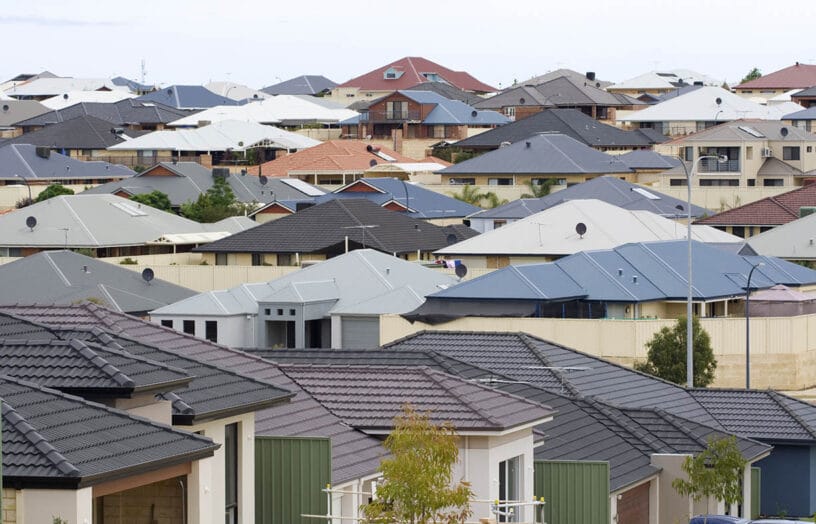 All-electric
All-electric
Mandatory disclosure of energy ratings on the horizon
Graham Hunt introduces us to a soon-to-be-implemented national framework that will be a massive win for renters and homebuyers.
Read more

